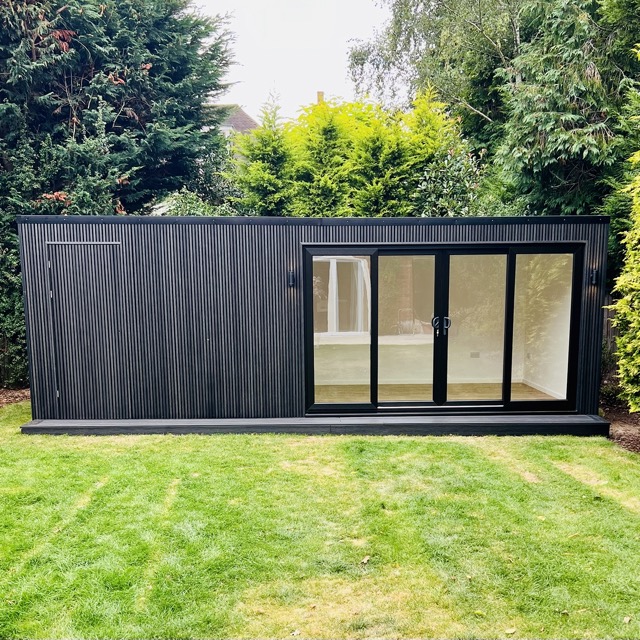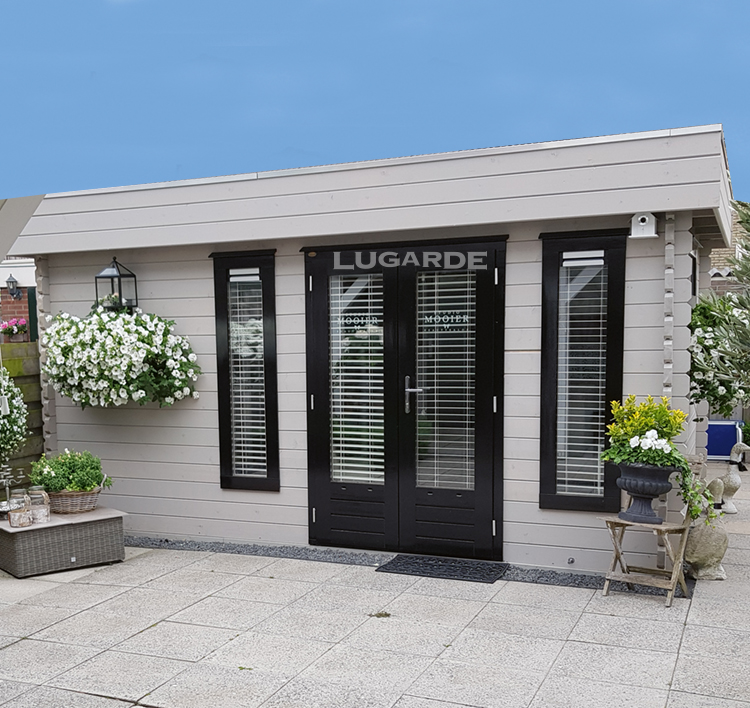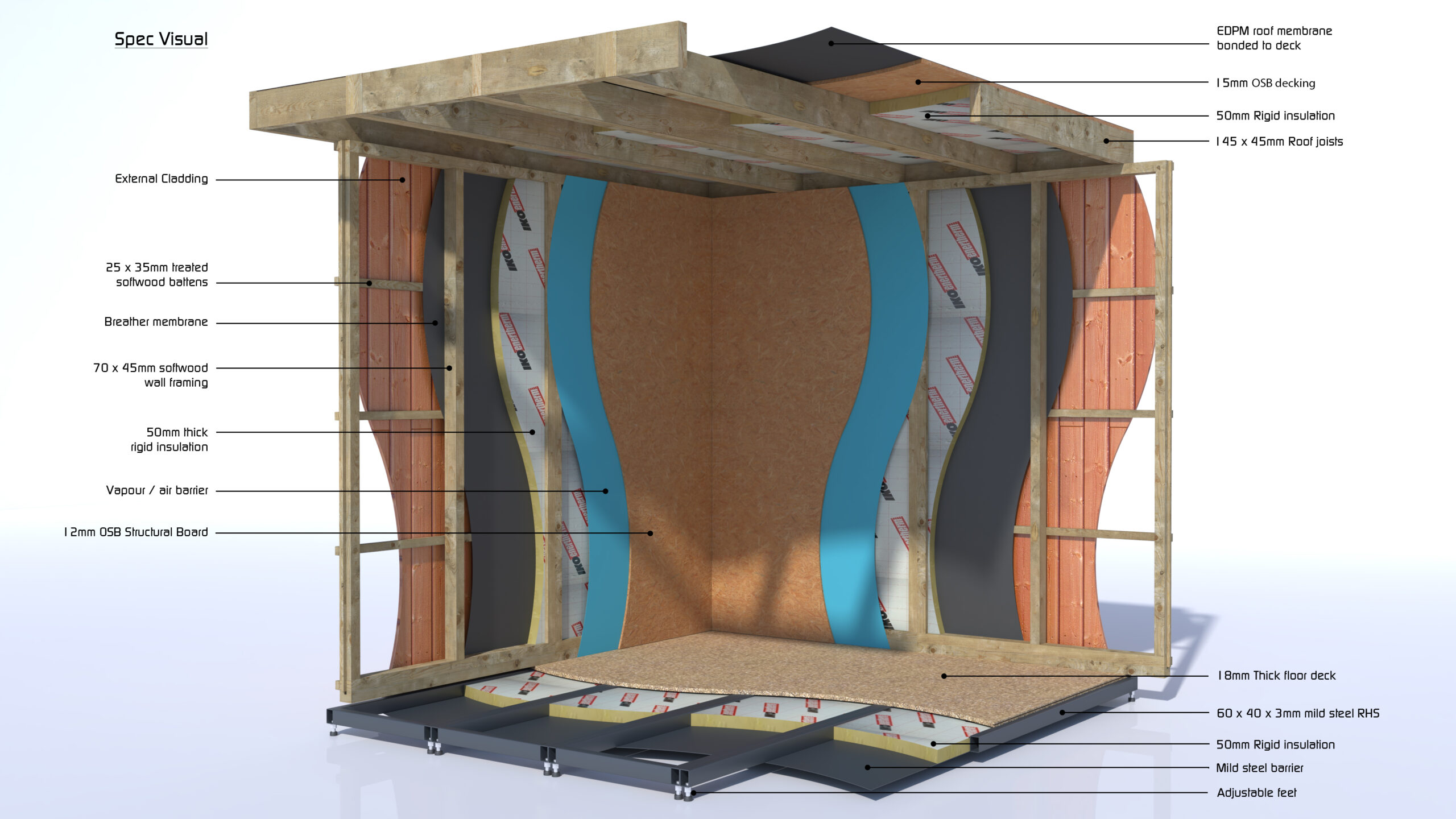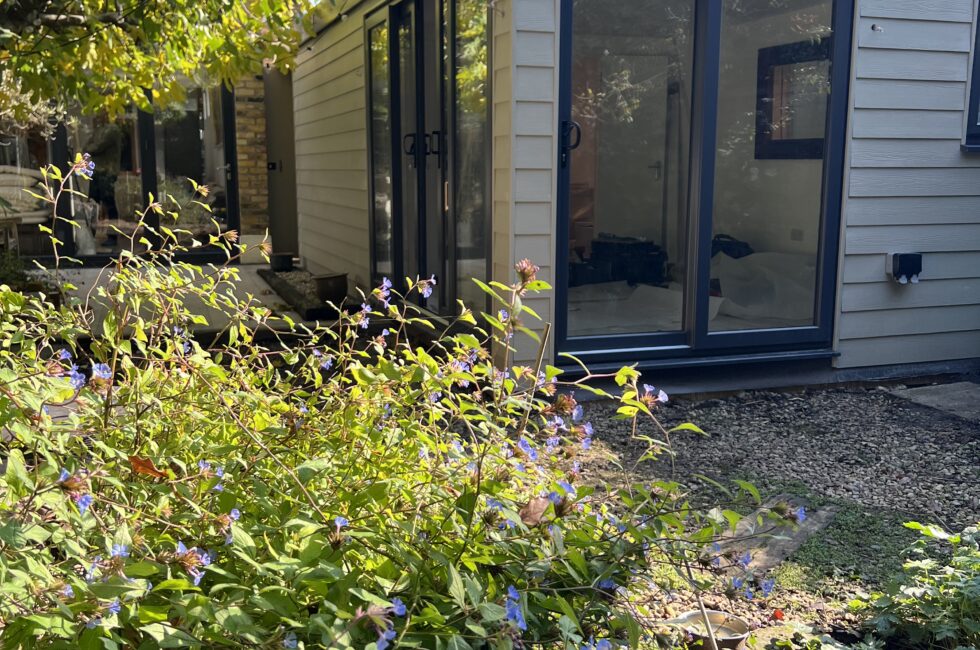How much does a garden room cost?
Why do the costs vary between different companies? Which garden room is right for you? A Comprehensive Guide to Garden Rooms... The cost of a garden room can vary significantly and is influenced by several key factors such as size, materials, and additional features. According to The Garden Room Guide, the average cost of a 3 m x 3 m garden room in the UK stands at approximately £21,632, or £2,403 per m2 inclusive of VAT and installation. However, the following factors primarily drive these costs:- Foundations: The type of foundation needed can affect the price, with options ranging from concrete bases to ground screws.
- Materials: The choice between aluminium or uPVC doors and windows, along with the type of cladding, significantly impacts cost.
- Inclusions: It's important to check what's included as standard. Are foundations and electrical connections part of the package?
Why are Garden Rooms expensive?
When evaluating the cost of garden rooms, it's essential to consider the alternatives. Many families love their current homes, and appreciate their local community and schools, but find themselves needing more space. The traditional solution—moving to a larger home—comes with a hefty price tag, especially in the South East of England. Between stamp duty, legal fees, moving costs, and more, the expense can easily surpass £60,000, not including the higher price of the new property itself. If you want to assess how much it would cost you to move the Barclays Bank website has more information on this and the Government’s stamp duty calculator will help you work out how much Stamp Duty you’ll pay. Garden rooms emerge as a compelling alternative in this context. They offer a way to add that much-needed extra space without leaving your home or dealing with the financial and logistical strains of moving. For a 5m x 3.5m garden room, costs range from £30,000 to £37,000—a fraction of the cost of moving, with the added benefit of adding value to your home. For those with a tighter budget, around £10,000, there are still options like log cabins or summer houses. While these can provide a more cost-effective solution, it's important to consider their longevity and what you plan to use them for. The primary distinction lies in their construction makeup which usually consists of locking the wall logs into one another, slotting in the windows and doors, and then fitting the roof timbers, before nailing in the roof boards and then the floorboards. They are not as well insulated as a garden room and won’t last as long, however, depending on what you plan to use it for, it may be the right choice for you and your budget.
For those with a tighter budget, around £10,000, there are still options like log cabins or summer houses. While these can provide a more cost-effective solution, it's important to consider their longevity and what you plan to use them for. The primary distinction lies in their construction makeup which usually consists of locking the wall logs into one another, slotting in the windows and doors, and then fitting the roof timbers, before nailing in the roof boards and then the floorboards. They are not as well insulated as a garden room and won’t last as long, however, depending on what you plan to use it for, it may be the right choice for you and your budget.
 In essence, garden rooms represent a smart investment in your current property, enhancing your living space without the overwhelming costs and hassle associated with moving. Whether your budget is big or small, there's a garden room solution that can meet your needs, providing lasting value to your home and lifestyle.
In essence, garden rooms represent a smart investment in your current property, enhancing your living space without the overwhelming costs and hassle associated with moving. Whether your budget is big or small, there's a garden room solution that can meet your needs, providing lasting value to your home and lifestyle.
Why are some garden rooms cheaper than others?
The difference in garden room prices can often be traced back to the quality of materials used and the construction process. High-quality materials and meticulous design play pivotal roles in ensuring the durability and functionality of your garden room, impacting the overall cost. Established garden room companies, leveraging years of experience and customer feedback, have refined their designs to offer superior quality and efficiency. This expertise allows them to provide extended warranties, affirming the longevity and value of their garden rooms. On the other hand, opting for a local builder might present a cost-effective alternative initially. These savings are usually due to lower overheads, as local builders typically don't incur the same expenses as larger companies, such as maintaining a showroom or extensive marketing campaigns. However, it's crucial to consider the long-term reliability and availability of support should issues arise post-construction. While a reputable local builder can offer a satisfactory outcome, the absence of a long-term guarantee might pose risks. Choosing between a specialised garden room provider and a local builder boils down to prioritising between upfront savings and the assurance of quality, durability, and ongoing support. If reliability and a warranty are paramount for your peace of mind, investing in a garden room from a seasoned company might be the wisest choice. Before we look at the materials and the factors that affect the cost of a garden room, it's important to let you know that My Retreat only makes timber frame garden rooms with EPS insulation, of all shapes and sizes, with steel frame floors, an EPDM rubber roof, electrical connection to your house, concrete pile foundation and a plaster finish as standard. However, we do offer alternative foundations and insulation types in our bespoke range. The reason we are letting you know this is because this method may not be the best choice for everyone and this article takes an honest look at the pros and cons of each, allowing you to make the best choice for yourself.The key factors that affect the price of a garden room:
Labour:
The cost of labour significantly influences garden room prices, with two primary factors at play: location and expertise. In regions like the South, where the cost of living is higher, labour charges tend to be higher. More importantly, the skill and experience level of the craftsmen—be it installers, joiners, or carpenters—also dictate the cost. Seasoned professionals, with their ability to deliver exceptional quality and efficiently navigate through challenges, naturally command higher fees. This expertise ensures a superior finish and durability of your garden room. While hiring a company from a different area might seem cost-effective, consider the logistics and feasibility of post-installation support and problem resolution.Garden Room Materials:
The outward appearance of garden rooms can be deceiving, as the true value and durability lie in the materials used beneath the surface. The choice of flooring frame materials that come into contact with moisture, the construction of walls and roofs, and the quality of insulation, doors, and windows all play critical roles. High-quality materials that withstand the test of time and elements contribute to the overall cost but also ensure the garden room's longevity and efficiency. The headline price of a garden room often doesn't reflect the full story, emphasising the importance of understanding what's included in the price and the construction specifics. In essence, when evaluating garden room costs, it's crucial to look beyond the surface and consider the long-term value provided by skilled labour and quality materials. These elements are pivotal in ensuring that your garden room remains a cherished and durable extension of your home for years to come.The 10 key things that affect the costs:
1. Garden Room Foundation Types:
Concrete bases vs Ground Screws vs Concrete Piles vs Plastic grid System: The pros and cons of eachConcrete Raft foundation for a Garden Room
Pros:- Solid Foundation: Provides a robust base, ideal for garden room gyms or areas with heavy equipment and activity
- Prevents Nesting: Eliminates gaps between the garden room and ground, deterring small animals and rodents from nesting
- Weed Control: Stops weeds from growing underneath the room
- Cost: Higher price point, approximately £70 per square meter, not including labour costs. Additional charges possible for soil excavation
- Environmental Impact: Less sustainable compared to other foundation methods
- Tree Roots: Risks damaging tree roots and may not be suitable for all soil conditions
- Installation Time: Takes several days to complete the installation and setting process
- Rot Prevention: Timber in contact with concrete is susceptible to rot, requiring preventive treatments.
Ground Screw Foundation for a Garden Room
Pros:- Quick Installation: Typically completed within a morning
- No Digging Required: Eliminates the need for excavation work
- Immediate Construction: Allows for construction to start immediately after installation
- Durability and Eco-Friendliness: More durable and environmentally friendly than concrete
- Adaptability: Ideal for sloped or irregular terrains, avoiding damage to tree roots
- Moisture Protection: Raises timber above moist surfaces, reducing decay risk
- Cost: Potentially more expensive than concrete foundations
- Additional Measures: May require steps or decking to address gaps on uneven terrain
- Coordination Needed: Might need coordination with subcontractors
- Aesthetic Issues: Large screw heads and central placement may necessitate additional decking to conceal ground screws
- Pest Risk: Gaps could allow pests to enter
Concrete Pile Foundations for a Garden Room
Pros:- Eco-Friendly: Reduces concrete use by over 90% compared to conventional slabs
- Swift Installation: Typically completed within a morning with minimal disruption and no heavy excavation
- Stability: Distributes weight evenly across several points for enhanced stability
- Versatile: Effective on various ground conditions, including slopes and uneven landscapes
- Tree Root Safety: Does not harm tree roots
- Moisture Protection: Elevates the structure above moist ground, reducing rot risk
- Lightweight: Easy to transport, suitable for locations with limited access
- Gap Issues: Uneven terrain can create gaps between the ground and the garden room, requiring solutions that add to the cost
- Slope Limitations: Not recommended for significantly sloped areas
Plastic Grid System (ProBase)
Pros:- Cost-Effective: More affordable than traditional concrete foundations
- Recyclable and Low Maintenance: Made from recycled plastic, lightweight, and requires no maintenance
- Easy Installation: Simple and efficient to install
- Air Circulation: Enhances air circulation, aiding timber drying
- Drainage: Ensures excellent drainage
- Ground Condition Dependency: Effectiveness influenced by underlying terrain; may shift if ground changes
- Design Limitations: Initially designed for lighter constructions
- Moisture Risk: Higher risk of moisture penetration
- Pest Risk: Gravel can deter larger pests, but smaller insects might enter
- Stability: Susceptible to shifting due to its less rigid material composition
EasyPad (Concrete Pads) Foundation for a Garden Room
Pros:- Dry Timber: Raises timber above the ground for dryness and proper aeration
- Lightweight: Easy to transport to locations with limited access
- Adjustability: Offers up to 150mm of adjustability for precise on-site levelling
- Eco-Friendly: Cuts down concrete usage by 98% compared to conventional bases
- Simple Installation: No specialized skills or tools needed for installation
- Prolonged Installation: May be prolonged and unsuitable for extremely uneven landscapes
- Ground Suitability: Not ideal for very soggy or soft ground
- Excavation Needs: Additional excavation for fitting pads can increase costs unless the soil can be reused in the garden
2. Garden Room Electrical Connection:
Is the connection to your home's electricity included? Different companies have varied policies; some require you to arrange for electricity to be extended to the garden room's location, while others provide a specific amount of cabling. A professional electrician will need to link your garden room to your home's main electrical panel, typically requiring a 32-amp connection. Ensure there's available capacity on your consumer for this addition, otherwise, you’ll pay around £600 for a new consumer unit.3. Garden Room Internal Wall Finish:
Some garden room companies opt for a durable, easy-to-clean melamine lining for the interior walls. This type of PVC cladding, commonly used in healthcare settings, is both cost-effective and quick to install. Alternatively, a plaster finish offers a look in-keeping with your house but comes at a higher cost and necessitates a longer installation period due to drying times. Additionally, consider whether the service includes a base coat of paint on the plaster, which can be challenging to apply due to its absorbent nature. Some companies may offer a finished paint as an upgrade, while others may leave the walls primed for your final decoration.4. Garden Room Roof type:
Flat roofs on garden rooms typically feature EPDM, a durable, low-maintenance rubber material made from recycled tyres. Another option is insulated metal roof panels, which are both economical and functional. However, this choice often means that electrical wiring and lighting fixtures must be mounted on the surface, concealed by white trunking, to accommodate the roof's structure.EPDM Rubber Roof vs Insulated Metal Roof for a Garden Room: Pros and Cons
EPDM Rubber Roof on a Garden Room
Pros- Remarkably long-lasting with superior resistance to weather conditions
- Contemporary and stylish appearance
- Comes with a 20-year warranty and can last up to 50 years
- Outstanding resistance to ultraviolet rays
- Efficiently absorbs and retains warmth
- Simple to repair
- Eco-conscious choice, crafted from recycled car tyres that would otherwise contribute to landfill waste.
- Vulnerable to punctures or tears from sharp objects, such as tree branches
- Lacks significant resistance to fire.
Metal Roof on a Garden Room
- Remarkable strength and longevity
- Economically advantageous
- Can last over half a century
- Requires very little maintenance
- Eco-friendly, typically crafted from materials that can be recycled.
- Electrical fixtures and lighting on the roof might need to be externally mounted, with trunking utilized to conceal wiring
- Metal roofs may amplify noise during intense rain or hail, potentially disrupting your concentration
- Prone to dents if an object falls on them.
5. Garden Room Electrics:
The specifics of internal electrical setups vary from one company to another. Typically, packages include white switches, a designated number of sockets, an electric heater, and spotlights. There's often an opportunity to opt for upgrades, such as chrome or black finishes for sockets and switches. A crucial aspect to consider is the type of electrical installation provided: recessed (where sockets are embedded into the wall, with wires hidden behind plasterboard, mirroring standard household electrics) versus surface-mounted. Surface-mounted electrics involve a network of channels and boxes for attaching lights and outlets externally, without the need to alter the wall structure. This method is cheaper and offers flexibility in electrical layout but involves visible wiring encased in trunking.6. Garden Room Flooring
Most garden room companies will include flooring, but worth checking what they use. Laminate flooring is cost-effective and is now so good that it is often mistaken for wood, whilst being easy to clean and warm underfoot.7. Garden Room Insulation - Garden Room Insulation Types: The Pros & Cons
Rigid Foam vs Quilted vs SIPS vs Mineral Wall
Foam or EPS (Expanded Polystyrene)
**Thermal Conductivity:** 0.037 W/mK Pros- Thermal Efficiency: Maintains comfortable temperatures year-round
- Moisture Resistance: Prevents damp and mould, preserving structural integrity
- Lightweight & Easy Installation: Simplifies handling and reduces labour costs
- Durability: Long-lasting with no need for maintenance or replacement
- Cost-Effective: Affordable with excellent insulation performance
- Eco-Friendly Options: Available in recycled materials, reducing energy consumption
- Sound Insulation: Offers noise reduction for quieter indoor environments
- Versatile: Suitable for walls, floors, and roofs, providing comprehensive insulation.
- Environmental Impact: Not environmentally friendly if not properly disposed of/recycled
- Pest Susceptibility: Can be susceptible to damage from pests if not properly protected
- Comparative Performance: It may offer lower thermal resistance than other insulations
SIP (Structural Insulated Panels) 70mm
**Thermal Conductivity:** 0.03 W/mK Pros- High Energy Efficiency: SIPs provide superior insulation, significantly reducing heating and cooling costs
- Uniform Insulation: Offers consistent thermal performance across the entire panel, eliminating cold spots
- Speed of Construction: Pre-fabricated panels speed up the building process, with insulation already in place
- Airtight Seal: Reduces air leakage, enhancing overall energy efficiency and comfort
- Reduced Thermal Bridging: The continuous insulation layer minimizes heat loss through framing, improving energy performance
- Potential Sagging Issues: SIP panels are connected using an insulated SIP spline, a full-length piece that joins the panels together. While this is suitable for walls, using it on a roof can lead to sagging at the joints and water pooling on the surface. Over time, this can cause leaks in the roof.
- Weather Sensitivity: Exposure to rain during construction can trap moisture, leading to irreversible mould issues
- Breathability Issues: The airtight nature of the building can prevent proper ventilation, risking moisture and mould buildup without complex ventilation systems.
- Initial Cost: Typically more expensive upfront than traditional framing and insulation methods
- Limited Flexibility: Modifications and adjustments on-site can be challenging due to the pre-fabricated nature of the panels
- Moisture Management: Must be properly designed and installed to prevent moisture accumulation, which could affect thermal performance
PIR (polyisocyanurate) - Celotex, Kingspan, etc.
**Thermal Conductivity:** 0.022 W/mK Pros- High Thermal Efficiency: PIR offers superior R-values, providing excellent insulation and reducing energy costs
- Moisture Resistance: Resistant to water absorption, maintaining its insulating properties even in damp conditions
- Fire Performance: Exhibits better fire resistance compared to other foam insulations
- Space Saving: Requires less thickness to achieve desired insulation levels, ideal for limited spaces
- Durability: Retains its structural integrity and insulating properties over time, without significant degradation
- Higher Cost: Generally more expensive than traditional insulation materials, impacting initial construction budgets
- Chemical Sensitivity: Can be sensitive to solvents and certain chemicals, requiring careful handling and installation
- Installation Precision: Requires accurate cutting and fitting to ensure maximum insulation efficiency and minimize gaps
- Limited Recyclability: While it can be recycled, options are not as widespread, posing challenges for sustainable disposal
Mineral Wool or Rock Wool
**Thermal Conductivity:** 0.037 W/mK Pros- Fire Resistance: Exceptionally fire-resistant, capable of withstanding temperatures above 1,000°C, enhancing building safety
- Thermal Performance: Provides good thermal insulation, reducing energy costs by maintaining stable indoor temperatures
- Sound Absorption: Offers superior sound insulation properties, effectively blocking noise from outside and between rooms
- Moisture Resilience: Water-repellent yet breathable, preventing moisture buildup while allowing vapour to pass through, reducing mould risk
- Eco-friendly: Often made from recycled materials, contributing to environmental sustainability
- Thickness Requirement: Generally requires twice the thickness to achieve the same values, which may impact internal space
- Irritation Risk: Fibers can cause skin, eye, and respiratory irritation during installation, necessitating protective gear
- Higher Cost: Generally more expensive than some other insulation types, impacting initial project budgets
- Installation Challenges: Requires careful installation to avoid gaps and ensure maximum effectiveness; improper installation can reduce its insulating properties
- Environmental Concerns: While made from natural materials, the energy-intensive manufacturing process and potential for fibre release into the environment raise concerns
- Disposal Issues: Not easily recyclable at the end of its life, often ending up in landfills
8. Wall and floor construction methods: Timber Frame vs Steel Frame vs SIPs
Numerous distinctions exist between SIPs, steel and timber frame construction. The decision on which construction approach suits your garden room best ultimately rests with you.Timber Frame
Pros:- Robust and long-lasting
- Speedy construction with prefabricated options
- Installation is done by skilled woodworkers
- Adaptable to various designs and modifications
- Eco-conscious with responsibly sourced timber
- Minimizes waste during construction
- Flexible design and alterations.
- Lesser structural strength compared to a steel frame
- Inferior insulation efficiency relative to Structural Insulated Panels (SIPs).
Steel Frame
Pros:- Exceptionally durable, offering superior strength compared to timber
- Lightweight, facilitating easier handling and construction
- Enables rapid assembly thanks to prefabrication
- Highly resistant to fire, enhancing safety.
- Higher cost relative to timber and SIPs
- Increased thermal conductivity, potentially leading to greater heat loss
- Environmental concerns due to production and disposal processes
- Modifications and repairs can be challenging post-construction
- Vulnerability to corrosion in humid, coastal, or chemically active environments
- Challenging to modify or repair once construction is complete
SIPs Panel
Pros:- Typically more robust than timber frames
- Outstanding thermal insulation properties
- Rapid assembly is possible directly at the site
- Long-lasting and resilient
- Lack of breathability can trap moisture, risking internal rot without adequate ventilation
- Mechanical ventilation systems used in larger structures to mitigate moisture are often not feasible for garden rooms
- Challenging to modify or repair once construction is complete.
9. Garden Room Cladding:
Cedar vs Composite vs Larch vs Charred Larch vs ThermowoodCanadian Western Red Cedar Cladding for a Garden Room
Pros:- Natural Beauty: Distinctive rich hues of orange and red make a garden room look fabulous
- Durability: Resistant to decay and insects due to natural oils
- Sustainability: Renewable resources with a low carbon footprint.
- Maintenance: Requires periodic staining or oiling
- Cost: Generally higher compared to some alternatives
James Hardie Plank Cladding for a Garden Room
Pros:- Durability: Resistant to fire, moisture, and pests
- Low Maintenance: Minimal upkeep required
- Design Options: Available in 20+ colours and textures
- Longevity: Will outlast traditional wood cladding.
- Installation: Labout intensive as the cladding must be cut and fitted on site as the panels would be too heavy if they were clad in the factory like timber cladding. The ends also need painting after being cut to protect them
- Environmental Impact: Higher than natural wood due to cement content.
Larch Cladding for a Garden Room
Pros:- Natural Strength: Tough and durable
- Aesthetic Appeal: Ages gracefully with a warm appearance
- Dimensional Stability: Resists warping better than something like Redwood
- Cost-Effective: Generally less expensive
- Maintenance: Requires periodic treatments because it will begin to fade and lose its colour if not treated/oiled every 12-18 months like any natural timber cladding. However, that is a look that some people like, see here for an example of a silvered larch and how nice it looks: Witness The Transformation of a Lifetime.
- Stability: Larch boards will shrink and expand through the year and may distort or move
Charred Larch (Shou Sugi Ban) for a Garden Room
Pros:- Unique Aesthetic: Modern, rustic appearance
- Enhanced Durability: Resistant to pests and fire
- Low Maintenance: The charred layer protects the wood.
- Maintenance: Requires periodic treatments because it will begin to fade and lose its colour if not treated/oiled every 12-18 months like any natural timber cladding.
- Higher Initial Cost: It can be labour-intensive as any cuts or exposed ends require charring after cutting
Thermowood Cladding for a Garden Room
Pros:- Dimensional Stability: Thermowood is an ultra-heated timber that reduces the risk of raking, warping and shrinking
- Durability: Improved resistance to decay and insects
- Environmental Benefits: Heat-treated rather than chemically treated.
- Mid-range Cost: It is a lot more durable than Redwood and Larch and cheaper than Cedar and the composite options
- Colour Fading: Will silver off over time if not treated with oil etc every 12-18 months
- Aesthetics: It's a very traditional look and requires lots of doors and windows to break up dark brown boards of cladding, which I think can be too much on large sections, but that is a personal choice. Like any natural timber, it will silver off over time if not oiled once every 12-18 months.
Redwood Cladding for a Garden Room
Pros:- Natural Beauty: Pale golden hues, perfect if you are going to paint your garden room
- Cost-effective: One of, if not the cheapest ways to clad your garden room
- Sustainability: Renewable resource with a moderate carbon footprint
- Durability: As it is a soft wood it is prone to twisting, warping and splitting. Most garden room companies will only give a 5-year guarantee rather than a 10-year guarantee.
Millboard Cladding for a Garden Room
Pros:- Low Maintenance: Requires minimal upkeep, only occasional cleaning
- Durability: Resistant to fading, scratching, and mould
- Aesthetics: Looks incredible and Mimics the look of natural wood without the maintenance
- Cost: Generally more expensive upfront
- Aesthetics: The look isn't everyone's cup of tea.
EcoScape Slatted Composite Cladding for a Garden Room
Pros:- Low Maintenance: Requires minimal upkeep, only occasional cleaning
- Durability: Resistant to fading, scratching, and mould
- Aesthetic Options: Mimics the look of natural wood without the maintenance
- Cost: Generally more expensive, especially as it needs to be cut and fixed onsite rather than in the factory due to the weight, but it will outlive natural timber.
- Aesthetics: The look isn't everyone's cup of tea.
10. Garden Room Optional Extras:
-
- Roof Extension: A stylish canopy at the front, often equipped with spotlights for enhanced aesthetics. While not essential, it adds a touch of elegance and can be complemented with wall extensions for added privacy and a refined look.
- Canopy: Ideal for those desiring an outdoor kitchen, BBQ, hot tub, or seating area. A canopy can be installed on the sides or front, offering both illumination and protection from the elements, perfectly blending functionality with style.
- Decking: Elevates the entrance to your garden room, facilitating easier access. For those planning garden landscaping, decking might be optional. Options include traditional timber decking, which is cost-effective but requires regular maintenance and may become slippery when wet, and composite decking, which is higher in price but boasts low maintenance and a variety of colour choices. For a premium finish, consider Millboard decking, known for its stunning appearance and concealed fixings.
- External Lighting: Enhance the ambience and functionality of your garden room's exterior with tailored lighting options.
- Internet Connection: Ensure your garden room is as connected as you need, with options for extending Wi-Fi coverage or hardwired internet connections for uninterrupted online access.
How is a My Retreat Garden Room made?
We spoke above about the different things that affect the cost of a garden room. Now it’s time to look inside our garden rooms to see what materials we use and why. Garden Room Floor: Our garden rooms have a powder-coated, steel-frame floor with adjustable feet. This allows us to overcome any uneven surface, but the BIG thing is that steel doesn’t rot, unlike timber giving you a solid floor for years to come. If you place timber on or near the ground, after a number of years it will rot. Garden Room Walls: Our walls are constructed from timber frames with 50mm Foam or EPS (Expanded Polystyrene) insulation so that it is lightweight and easy to carry. We construct them in our production facility in the UK to ensure quality control. They are also made in a cassette format which means our garden rooms are quicker to construct, which saves on labour and helps to keep the cost down for customers, meaning that we can spend more on other materials that make a difference. The other benefit is that the garden room can be carried through a house or a flat if there is no side access. Garden Room Doors & Windows: We use quality windows and doors from Deceuninck who are at the forefront of innovative, high-performance windows and doors. They supply award-winning PVC-U to the trade & commercial sectors. We could use cheaper alternatives, however, the issue is that replacement parts can be hard to find and the quality isn’t the same. All our doors and windows have matching colours on the inside and out, either black on the outside and inside or anthracite grey on both sides. Sure, we could save money and go for cheaper doors that are white on the inside, but it doesn’t give the same lovely finish to a garden room. Garden Room Flat EPDM Roof: EPDM offers a long-lasting and low-maintenance approach to domestic flat roofing. With a life expectancy of more than 50 years, EPDM could outlive some buildings. EPDM delivers 100% waterproofing performance over its expected lifespan of over five decades and requires little or no maintenance once correctly installed.- Impressive Durability
- Easy to work with
- Practically no maintenance
- Environmentally Friendly
 What is included in the cost of a garden room?
We believe in transparency, that’s why we display our prices clearly on the website and the free online design tool updates the costs as you add or remove things. The standard cost includes everything the room needs:
What is included in the cost of a garden room?
We believe in transparency, that’s why we display our prices clearly on the website and the free online design tool updates the costs as you add or remove things. The standard cost includes everything the room needs:
- Concrete pile foundations
- Electrical connection to your fuse board and certificate (20 linear metres as standard)
- Cladding - composite, Larch, Cedar, painted Larch (Olive Green or Grey), Charred or Thermowood.
- UPVC or aluminium double-glazed windows and doors
- Optional composite decking step
- Plasterboard, skim, and a decorator's prime coat of paint
- Choice of Howdens V Groove laminate floor colours
- Skirting boards
- 50mm foam Insulation in the floor, walls and ceiling, it’s lightweight
- Internally recessed electrics (light switches, sockets, spotlights, 2kw electric slimline
- Installation & delivery
- Internal partition walls and doors divide the room
- Hidden door - this is where the single door, usually to a storage room is clad with the same cladding as the garden room to hide or conceal the door for a clean look.
- Aluminium doors rather than UPVC, are essential if you choose bifold doors. UPVC bifolds in a timber frame always need adjusting which is why we don’t offer them.
- Roof Overhang/Extension - Add a canopy at the front with spotlights for a unique look and bit of shelter from the elements. It's possible to add on one, two or three sides, with or without spotlights
- Wall Extension - perfect if you want to close off one or both ends of the roof overhang for privacy and/or to create a unique design
- Canopy - perfect cover for your outdoor furniture, hot tub or outdoor BBQ
- Decking - choose from a range of colours and sizes
- Windows - UPVC or aluminium in 4 standard sizes, opening or fixed
- Internet - we understand that some people's internet reaches the garden room or they have boosters. However, if yours does not you can choose a CAT6 data cable that is connected to your router to give your garden room its own wifi zone and the same speed as in your house, perfect for those using it as a home office, kids playroom or gym. We also offer outdoor heaters, sockets, as well as a range of different coloured switches and sockets.
- Sizes - whilst our panels come in standard sizes to keep the cost down, we do offer a bespoke option and can make panels to any size if you need a particular sized garden room.
- How much does a garden room cost?
- What is the best base for a garden room?
- Do garden rooms need planning permission?
- Design a 3D garden room for free and get an instant price
- The pros and cons of adding a sedum roof
- Is it cheaper to buy or build a garden room?
- Can you sleep in a garden room?
- Go to the Planning Portal to read more on Building Regulations
- Go to the Planning Portal to find out more about Planning Permission and find your Local Authority


